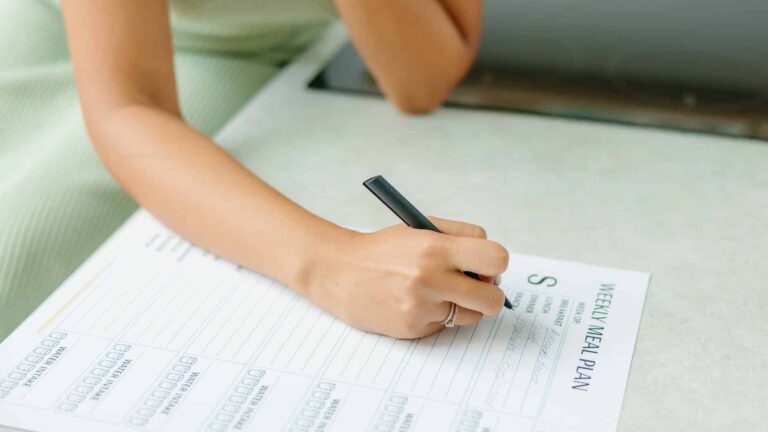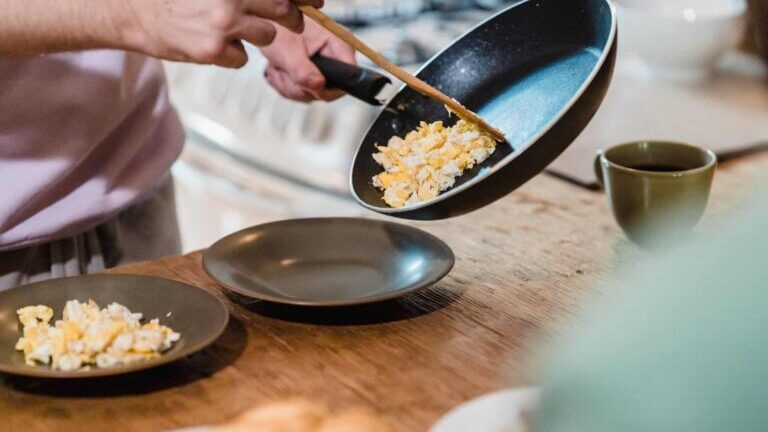

For those seeking a healthy and sustainable way to lose weight and improve their overall health, the South Beach Diet has been a go-to choice for many. This diet takes a balanced approach to weight loss, focusing on healthy fats, lean proteins, and low-glycemic-index carbohydrates. Here, we explore the foundations of the South Beach Diet and provide an overview of its different phases, with a particular focus on South Beach Diet Phase 1.
The South Beach Diet is a nutrition plan developed by cardiologist Dr. Arthur Agatston. This diet is not about low-carb or low-fat foods; instead, it emphasizes the quality of the carbohydrates and fats you eat. The goal of the South Beach Diet is to change the balance of the foods you eat to promote weight loss and a healthy lifestyle. For more in-depth information, check out our comprehensive guide on the south beach diet.
The South Beach Diet is divided into three phases, each with a specific goal:
Phase 1: This is the strictest phase, designed to eliminate cravings for sugar and refined starches, and kick-start weight loss. The focus in this phase is on consuming lean proteins, high-fiber vegetables, and healthy fats.
Phase 2: In this phase, whole grains and fruits are gradually reintroduced into the diet. The purpose is to continue weight loss until the target weight is reached.
Phase 3: This is the maintenance phase, where you continue to follow the principles learned in the previous phases, but with a greater variety of foods allowed.
Each phase is designed to help you achieve and maintain a healthy weight, while promoting better health. The South Beach Diet encourages regular exercise and provides tips for maintaining the diet in various situations, such as when eating out or traveling. In the following sections, we will provide a more detailed look at the south beach diet phase 1, including the foods to eat, foods to avoid, and tips for success. For more details on the subsequent phases, visit our guide on south beach diet phase 2.
Understanding the South Beach diet Phase 1 can help those embarking on this nutritional journey to set the right expectations and make informed decisions about their food choices.
Phase 1 of the South Beach diet lays the foundation for the entire program. It’s the most restrictive stage, designed to reset the body’s metabolism by eliminating cravings for sugar and refined starches. The primary goal is to stabilize blood sugar levels, which can lead to weight loss and improved overall health.
During this phase, individuals are encouraged to consume high-quality proteins, such as lean meats, poultry, fish, and eggs, along with plenty of vegetables. Healthy fats, like those found in avocados, nuts, and seeds, are also included. For a detailed list of foods allowed in this phase, refer to our south beach diet food list.
Phase 1 of the South Beach diet typically lasts for two weeks. However, the duration can be adjusted based on individual needs and goals. Some people may choose to extend this stage until they have fully eliminated their cravings for sugar and refined carbohydrates.
During this period, one can expect to lose between 8 to 13 pounds, primarily from the midsection. This initial weight loss can serve as a motivational boost to continue with the program.
| Phase | Duration | Expected Weight Loss |
|---|---|---|
| Phase 1 | Two weeks | 8 – 13 pounds |
Remember that weight loss can vary depending on various factors, including starting weight, age, sex, and level of physical activity. It’s also important to note that the South Beach diet is not just about losing weight but also about adopting a healthier lifestyle.
While Phase 1 is more restrictive, it sets the stage for a more balanced and sustainable way of eating in Phase 2. By understanding the purpose and expectations of Phase 1, individuals can better navigate the South Beach diet and make choices that align with their health goals.
Understanding the types of foods allowed in South Beach Diet Phase 1 is crucial for successfully adhering to this diet plan. In this phase, the emphasis is on consuming proteins, vegetables, and healthy fats and oils.
Protein is a vital component of the South Beach Diet. During Phase 1, individuals are encouraged to consume lean protein sources. This can include:
Protein plays a key role in satiety and can help curb cravings and maintain energy levels throughout the day. For a comprehensive list of protein sources and recipe ideas, refer to our South Beach Diet recipes article.
Vegetables are another important component of the South Beach Diet Phase 1. Non-starchy vegetables are highly recommended due to their low carbohydrate content. These include:
Vegetables provide essential vitamins, minerals, and fiber, all of which contribute to overall health and well-being. They can be enjoyed in a variety of ways, from salads to stir-fries. For more ideas, check out our South Beach Diet menu options.
Healthy fats and oils are also part of the South Beach Diet Phase 1. These can help to keep you feeling satisfied and provide essential fatty acids that your body needs for optimal health. This includes:
While fats are an important part of the diet, they should be consumed in moderation due to their high calorie content. Remember, the goal of Phase 1 is to kick-start weight loss and reset your body to burn fat for fuel. For more information on how to incorporate these foods into your meal plan, refer to our South Beach Diet meal plan guide.
By understanding the foods allowed in Phase 1 of the South Beach Diet, individuals can make informed choices that align with their diet goals and support a healthy lifestyle.
While the South Beach Diet Phase 1 does allow for a variety of healthy foods, there are certain items that you need to steer clear of during this phase. These include high sugar foods, high carb foods, and drinks containing alcohol and caffeine.
One of the main objectives of Phase 1 in the South Beach Diet is to eliminate excessive sugar from your diet. Therefore, it’s essential to avoid foods that contain high amounts of sugar. This includes both natural and processed sugars. Foods to avoid include:
The South Beach Diet Phase 1 also aims to limit your intake of carbohydrates. High carb foods can cause a spike in your blood sugar levels and are therefore not suitable for this phase of the diet. Foods to avoid include:
During Phase 1 of the South Beach Diet, it’s recommended to avoid alcohol and limit caffeine intake. While alcohol is high in calories and can slow down your weight loss progress, excessive caffeine can cause dehydration. Therefore, it’s best to avoid:
By avoiding these foods and drinks during Phase 1, you will be able to successfully reset your body’s sugar and carb cravings, setting a solid foundation for the next phase of the South Beach Diet. For more tips on what to eat during Phase 1, check out our South Beach Diet food list.
Planning meals can be a crucial part of success while following the South Beach Diet Phase 1. An organized meal plan can help maintain focus on the allowed foods and avoid any potential dietary pitfalls. Here are some meal options for those who are in the initial phase of the South Beach Diet.
Breakfast during this phase should be a combination of proteins and vegetables.
These options provide a good balance of proteins and healthy fats, which are essential in South Beach Diet Phase 1. For more breakfast ideas, check out our South Beach Diet recipes.
Lunch options can vary widely, but should always focus on high-protein foods and non-starchy vegetables.
Remember, portion control is key. The goal is to feel satisfied, but not overly full. For more lunch ideas, visit our South Beach Diet menu.
Dinner can include a lean protein source, non-starchy vegetables, and a healthy fat.
These dinner options are not only compliant with the diet plan, but also diverse and satisfying. For more dinner ideas, browse our South Beach Diet meal plan.
While snacks are optional in the South Beach Diet Phase 1, they can help manage hunger between meals.
These low-carb snack options can help curb cravings without deviating from the diet guidelines. For more snack ideas, explore our South Beach Diet snacks.
This sample meal plan provides a glimpse into what a typical day could look like during Phase 1 of the South Beach Diet. Remember to drink plenty of water throughout the day and adjust portions according to individual hunger and fullness cues. For more detailed information and meal ideas, check out our comprehensive South Beach Diet Plan.
Embarking on the South Beach Diet Phase 1 can be a significant shift in dietary habits. Success depends on thorough preparation, understanding potential side effects, and tracking progress. Here are some tips to help you navigate through the first phase of the South Beach Diet successfully.
Before starting Phase 1, ensure you understand the diet’s requirements and restrictions. Learn about the foods you can enjoy and those you should avoid. Our South Beach Diet food list can be a helpful resource.
It’s also crucial to plan your meals ahead of time. This can help prevent last-minute unhealthy food choices. Consider exploring our South Beach Diet meal plan and South Beach Diet recipes for inspiration.
Lastly, prepare mentally. Understand that the first phase of the diet can be challenging, but remember that it’s temporary and serves a purpose: to reset your body’s nutritional balance.
The initial phase of the South Beach Diet can lead to some side effects, primarily due to the reduction in carbohydrate intake. These may include fatigue, headaches, and irritability, often referred to as the “low-carb flu.”
Drink plenty of water and ensure you’re consuming enough salt to help manage these symptoms. If they persist, consider consulting with a healthcare professional.
It’s also important to remember that everyone’s body reacts differently. Be patient and give your body the time it needs to adjust to the new diet.
Monitor your progress throughout Phase 1. This includes not only weight loss but also other indicators of health such as energy levels and mood. Keeping a journal can be a useful tool for this.
Also, measure your food portions. This ensures you’re eating the right amounts and helps you stay on track with your diet.
After completing Phase 1, you should be well-prepared for the next stage of your South Beach Diet journey. Start exploring South Beach Diet Phase 2 to keep the momentum going.
Remember, achieving your health goals is a process, and every step you take on the South Beach Diet contributes to your overall wellness journey. Happy dieting!
